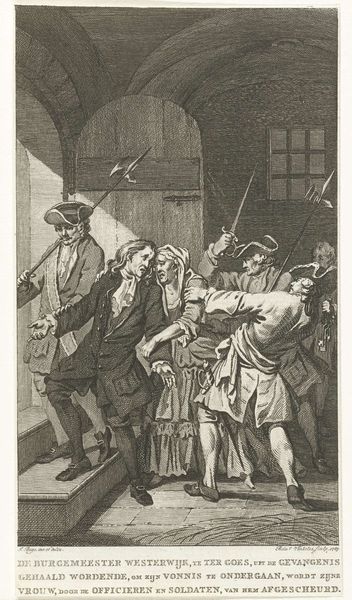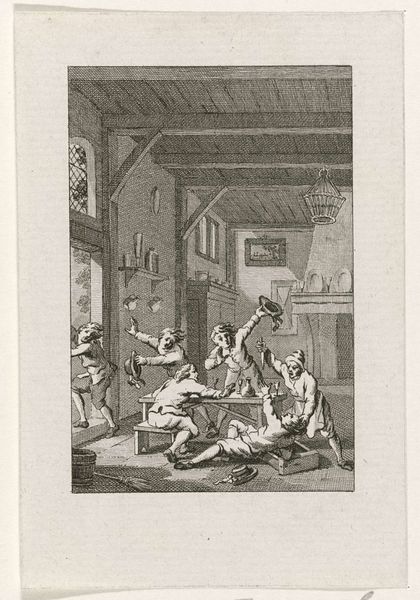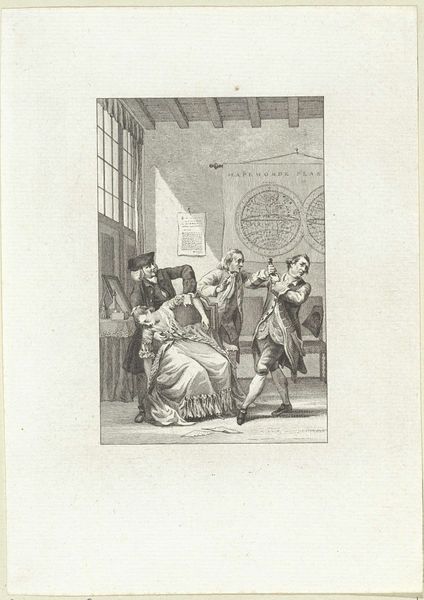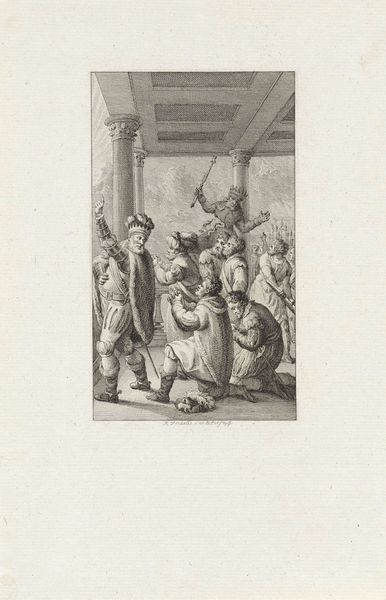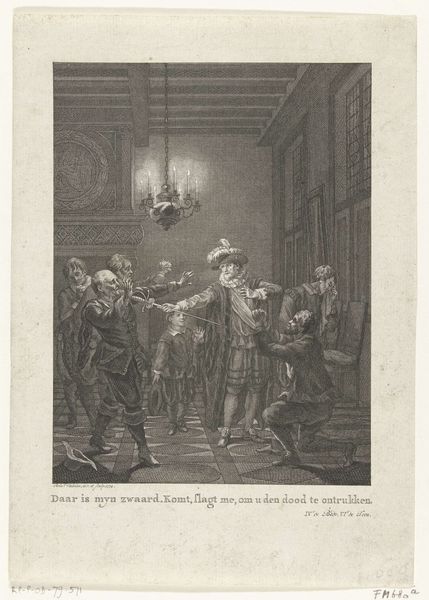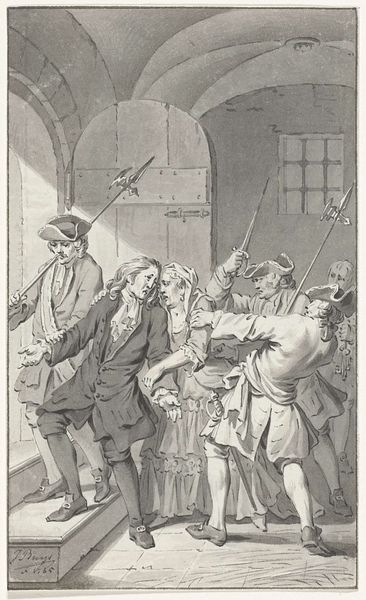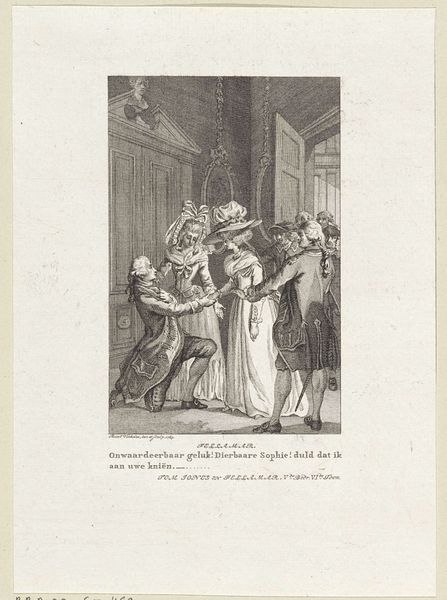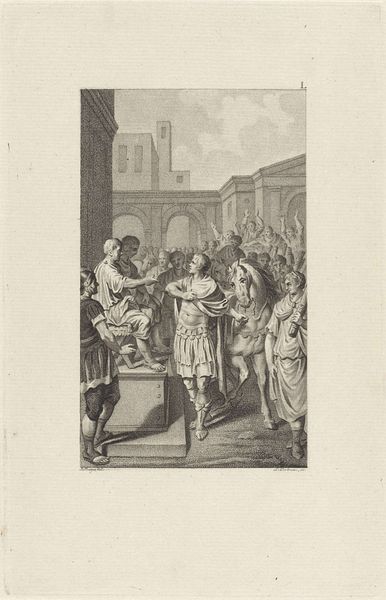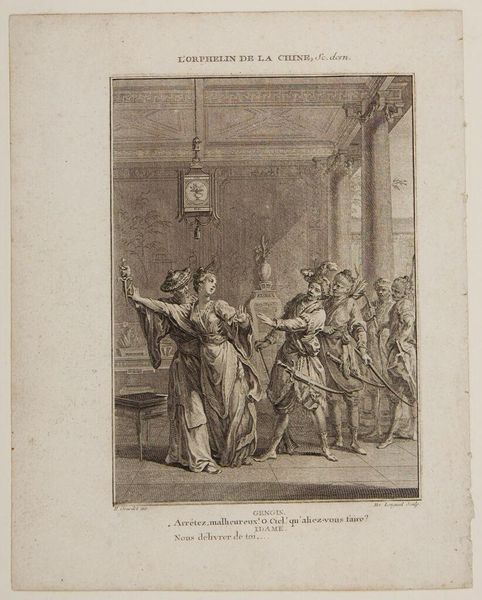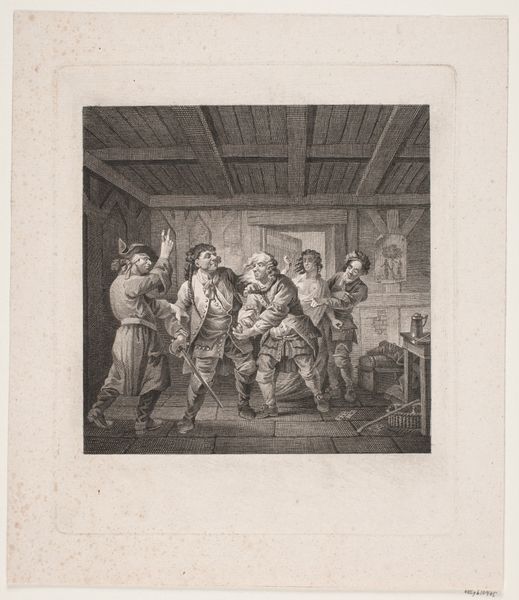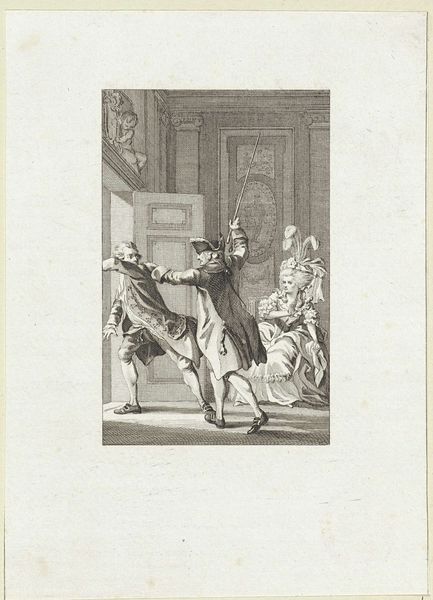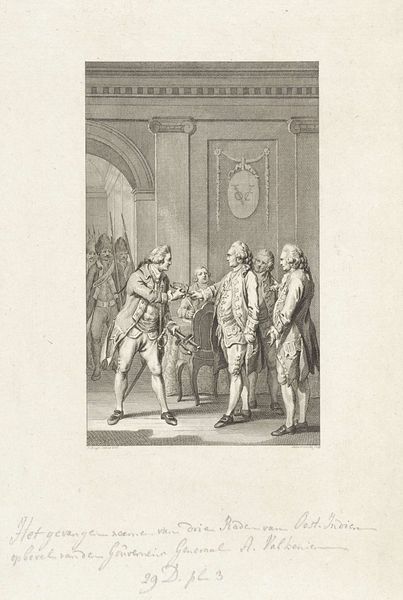
Burgemeester Westerwijk te ter Goes uit de gevangenis gehaald 1692. pr.dr. v.a.l. 1751 - 1816
0:00
0:00
reiniervinkeles
Rijksmuseum
Dimensions: height mm, width mm
Copyright: Rijks Museum: Open Domain
Editor: Here we have an engraving, "Burgemeester Westerwijk te ter Goes uit de gevangenis gehaald 1692" by Reinier Vinkeles, created sometime between 1751 and 1816. It depicts a scene with several figures, a doorway, and what appear to be guards. It feels very staged, like a theatrical production. What do you make of it? Curator: It’s interesting to note how history paintings such as this one gain relevance depending on the shifting socio-political landscapes. While depicting an event from 1692, this print was made much later. Consider, what purpose would it serve to revisit and represent this specific historical moment decades later? Editor: Perhaps it was intended to make a political statement relevant to the artist's time? To comment on freedom or oppression? Curator: Precisely! Prints like these, disseminated through burgeoning print culture, played a vital role in shaping public opinion and reinforcing societal values. Consider the power dynamics at play in this image and how they might reflect the artist’s contemporary social context. Who has agency, who is being acted upon? Editor: I see... The figures holding weapons are in control, escorting the Burgemeester and the woman assisting him. I imagine that understanding the political climate when the print was created could offer clues as to why this particular scene was chosen to be depicted. Curator: Exactly. How do the formal qualities – the composition, the line work – contribute to this narrative? Do you see the artist creating emphasis and hierarchy through the composition? Editor: The light source definitely highlights the central figures and creates drama, leading the eye. Also, considering that this was made long after the actual event, do you think that it depicts something as simple as patriotism for the audience? Curator: It very well could, and, depending on its cultural interpretation and reception, this imagery would be a reminder and potentially reinforce socio-cultural structures, encouraging civic participation. Editor: Fascinating. I never considered how the creation and distribution date could impact the print’s meaning so much! Curator: Thinking about art as an object circulating within a particular social and political environment really helps unpack its potential meanings and lasting impact.
Comments
No comments
Be the first to comment and join the conversation on the ultimate creative platform.
